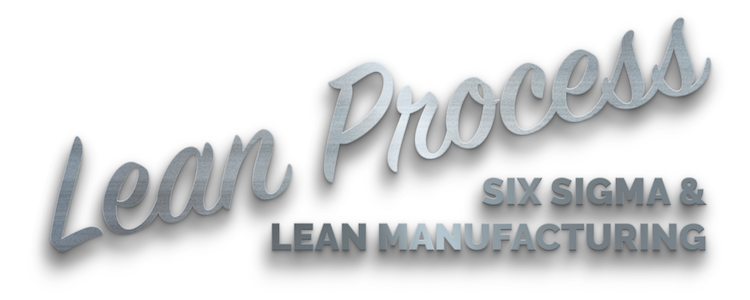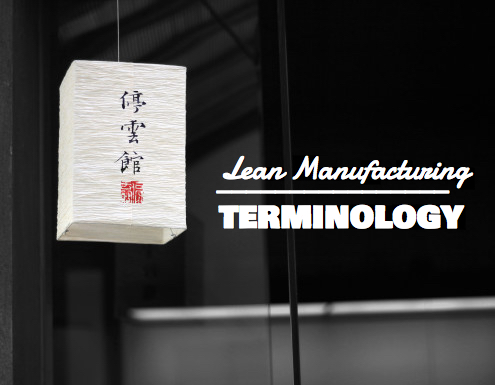In order to answer the question, what is lean six sigma, it is first necessary to understand the two constituent parts which are lean manufacturing and 6 Sigma. These are two different business improvement methodologies that have become popular due to the many documented successful implementations.
What is Lean Manufacturing?
Lean manufacturing is a process improvement methodology based upon the highly acclaimed Toyota Production System (TPS). The main focus in lean manufacturing is the removal of waste from a value stream. Waste in this instance is defined as anything that consumes resource but does not add value for the customer. By removing the waste in a value stream it becomes possible to only produce the right material, in the quantity desired by the customer, at exactly the right time. This results in a process that is more efficient and delivers product to the customer more quickly. The elements within a value stream that add value for the customer tend to represent a very small percentage of the total process. Therefore focusing on removing the waste, or non-value adding elements represents a significant opportunity for improvement in many businesses.
“Perfection is achieved, not when there is nothing more to add, but when there is nothing left to take away.”
~ Antoine de Saint Exupery
A common method that is used to drive improvements is a rapid improvement workshop or kaizen event. In such a workshop, a team will work through multiple iterations of the PDCA cycle to improve the process. The PDCA cycle asks the following questions:
- What is the performance gap?
- What is preventing the target from being met? (5 Whys, Fishbone, Man/Method/Machine/Material)
- What are the root causes in order of importance? (Pareto)
- What countermeasures will prevent the most important causes from recurring?
Once these questions are answered, the team will make a Plan based on their hypothesis. They will execute the plan during the Do phase. The team then either confirm or disprove their hypothesis by performing a Check on the output of the process.
This process is often documented on a one-page or A3 report. The A3 report serves multiple purposes such as documenting the status of the problem, a tool for reporting out to managers and is also useful for building consensus.
The emphasis in a lean workshop is rapid improvement to the process. Often they can be less than a week in duration. The operators from the shop floor are empowered to run these improvement events as they know the process inside out.
What is 6 Sigma?
6 Sigma is a popular quality improvement methodology made famous by the likes of Motorola and GE. 6 Sigma focuses on reducing the variation within a process. The term 6 sigma itself, relates to a level of performance where only 3.4 defects are produced per million opportunities. This is achieved by using careful measurement and statistical analysis to understand which ‘levers’ to pull to create the desired output.
Instead of the PDCA cycle, 6 Sigma relies on the DMAIC cycle which is used to fix problems with existing processes. The five stages of the DMAIC process are:
- Define the opportunity
- Measure the baseline performance
- Analyse the root causes
- Improve the process
- Control the improved process to prevent regression
There are many possible reasons for variation in a process. Examples include different operators, fatigue, different equipment, completing tasks in a different sequence, machine/tool wear, different raw materials, environmental changes (temperature, humidity, light etc). 6 Sigma aims to understand the influence of these variables so that they can be controlled to give more consistent, better quality outputs from the process.
Where a lean event might only last for a week, a typical 6 sigma project can typically last for up to 6 months. They tend to be led by a project manager known as a 6 Sigma Black Belt. The project team will be comprised of subject matter experts from each department within the business.
What is Lean Six Sigma?
Lean six sigma then is a methodology that looks to combine the best of both the lean manufacturing and the 6 Sigma approaches. In particular the emphasis is on obtaining the benefits of both methodologies, whilst minimizing any potential weaknesses. For instance, trying to take advantage of the velocity inherent in the lean method, whilst maintaining the statistical rigour of the 6 Sigma style. Using a combination of both approaches, also opens up the number of tools and techniques available to solve any particular problem.
The Lean Six Sigma Pocket Tool Book

To find out more about Lean Six Sigma, check out The Lean Six Sigma Pocket Toolbook: A Quick Reference Guide to 70 Tools for Improving Quality and Speed
by Michael L. George, John Maxey, David Rowlands & Mark Price.









